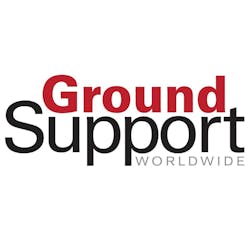
Editor's Note: This article is part of AviationPros’ sustainable aviation fuel primer.
As the aviation industry sets its sights on achieving net-zero carbon emissions by 2050, more efforts are being made to make air travel environmentally friendly.
Sustainable aviation fuel (SAF) is playing a key role in this goal.
To scale up production and increase supply, blending mandates and other regulatory measures are required, Andreea Moyes, Air BP’s global head of sustainability, wrote for AviationPros.
The measures should include incentives to bridge the gap with conventional jet fuel, she advised.
“Blending mandates as a way of stimulating demand are welcomed, however Air BP is calling for the complexities of SAF supply and delivery to be factored in when implementing these mandates,” Moyes said.
“The SAF supply chain faces a ‘chicken and egg’ problem with supply and demand: costs will come down if production scales up, but fuel providers are lacking a consistent demand signal to increase production and demand is low due to the high price premium,” Ashleigh McDougall, head of Europe and South Africa at Shell Aviation, explained in a Q&A interview with AviationPros.
McDougall added that Shell Aviation officials believe government and industry mandates are essential and can help encourage SAF adoption.
“Mandates should ideally be aligned globally, technology agnostic, be ambitious but consistent with pace to build supply capabilities and infrastructure and increase over time as production scales up,” McDougall said. “Once mandates are in place as a foundation, we can begin to add the other measures to complement them, such as fiscal incentives.”
According to the International Air Transport Association (IATA), SAF volumes in 2023 reached over 600 million liters, double the amount produced in 2022.
IATA also reported that SAF accounted for 3 percent of all renewable fuels produced, with 97 percent of renewable fuel production going to other sectors.
In 2024, IATA estimated SAF production is expected to triple to 1.875 billion liters, accounting for 0.53 percent of aviation’s fuel need, and 6 percent of renewable fuel capacity.
“The small percentage of SAF output as a proportion of overall renewable fuel is primarily due to the new capacity coming online in 2023 being allocated to other renewable fuels,” IATA officials explained.
“The doubling of SAF production in 2023 was encouraging as is the expected tripling of production expected in 2024. But even with that impressive growth, SAF as a portion of all renewable fuel production will only grow from 3 percent this year to 6 percent in 2024,” said IATA director general Willie Walsh. “This allocation limits SAF supply and keeps prices high.
“Aviation needs between 25 percent and 30 percent of renewable fuel production capacity for SAF. At those levels aviation will be on the trajectory needed to reach net zero carbon emissions by 2050. Until such levels are reached, we will continue missing huge opportunities to advance aviation’s decarbonization,” Walsh continued. “It is government policy that will make the difference. Governments must prioritize policies to incentivize the scaling-up of SAF production and to diversify feedstocks with those available locally.”
About the Author
Josh Smith
Editor
Josh Smith served as editor of Ground Support Worldwide as editor from 2016 through 2024. He oversaw production of the print magazine, created GSW's newsletters on a daily basis, and updated the latest news on AviationPros.com.
